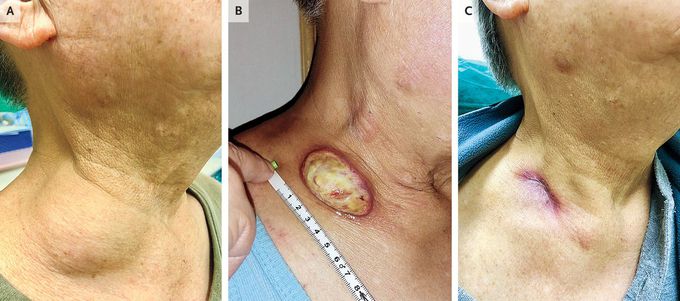


Paradoxical Reaction in the Treatment of Scrofula List of authors
A 66-year-old man presented to the outpatient clinic with a 1-month history of a progressively enlarging mass on the lower right side of the neck (Panel A). He otherwise felt well. His temperature was 37.0°C, and he did not appear to be cachectic. On examination, the neck mass was soft and nontender, and it measured 5.5 cm at the largest dimension. A chest radiograph showed no lung lesions. Findings on a computed tomographic scan of the neck and chest showed multiple, enlarged lymph nodes with peripheral enhancement extending from the lower right side of the neck to the mediastinum. Fine-needle aspiration of the neck mass was performed. Acid-fast bacilli were observed on microscopic examination, and culture grew Mycobacterium tuberculosis, which was sensitive to first-line antituberculous treatment. Test results for the human immunodeficiency virus were negative. A diagnosis of mycobacterial cervical lymphadenitis, or scrofula, was made. Treatment with rifampin, isoniazid, pyrazinamide, and ethambutol was initiated. The neck mass showed a paradoxical reaction, with drainage, during the first 3 months of treatment (Panel B, day 84 of treatment), but with wound care the neck mass gradually resolved over 5 months (Panel C, day 156 of treatment). The patient completed a 9-month course of treatment, and at follow-up 3 months after treatment was completed, he was well, without disease recurrence.

